Scuba Diving Equipment Guide 2025 – What You Really Need (and How Not to Break the Bank)
Underwater breathing is our superpower as scuba divers – and our scuba diving equipment is the suit of armour that makes it possible. At Dragon Dive Komodo, we believe that comfortable gear = safety. The more familiar you are with your own kit, the safer and more relaxed you are underwater.
If you’ve fallen in love with diving (or with a scuba diver 😉) and plan to dive more than a couple of times a year, investing in your own scuba gear quickly becomes a priority. The good news? With a smart plan, you can build a solid kit without spending crazy money – and every euro saved is a euro you can spend on more dives in Komodo.
What do I need to scuba dive?
Think of scuba gear in layers. First, you have the core life-support kit, then comfort and safety add-ons.
The basic scuba kit:
- Mask
- Fins
- Wetsuit or exposure suit
- BCD (Buoyancy Control Device)
- Regulator set (first/second stage, octopus, SPG)
- Dive computer
- Surface Marker Buoy (SMB)
On warm tropical reefs (water > 28°C) you can get away with a fairly simple set-up, but as soon as you travel, go deeper or dive cooler water, good exposure protection and a personal dive computer become essential.
Our advice: start with the six essentials (below), then add accessories over time. Don’t try to buy everything in one go – let your diving style guide your purchases.
The 6 essential pieces of scuba gear (and how to choose them)
1 – Diving mask: if it leaks, nothing else matters

Your mask is probably the most personal piece of scuba equipment. Every face is different – that’s why the same mask can be perfect on one diver and a nightmare on another.
Dragon Dive tips:
- Try before you buy. Put the mask on without the strap, inhale slightly through your nose and look down: if it holds without using your hands, it’s a good start.
- Low-volume masks (often freediving style) are trendy and easy to clear, but can press painfully on the eyebrows on some faces. If it hurts → not your mask.
- Ignore the myth that “a good mask never lets water in”. A bit of water in the mask is normal – learning to clear it is part of diving.
- Make sure you can easily pinch your nose for the Valsalva equalisation technique.
- Anti-fog coatings and films can help, but proper prepping (toothpaste, baby shampoo, or anti-fog drops) is still key.
Once you find a model that fits you well, stick to that brand/model. At Dragon Dive, we see many divers switching masks constantly when they really just need one good fit and a bit of practice.
2 – Wetsuit: comfort, warmth and longer dives

Many new divers do a first try dive in warm tropical water and think they “don’t get cold”. Then they start doing 3 dives a day in Komodo and suddenly a 3 mm feels very thin…
Water conducts heat away from your body up to 25 times faster than air. The more often you dive, the easier you get cold – that’s why instructors in Komodo happily wear 10–12 mm of neoprene or combinations.
Simple temperature guide:
- 3 mm wetsuit → > 27–28 °C
- 5 mm wetsuit → ~23–26 °C
- 7 mm wetsuit → ~17–22 °C
- 7 mm semi-dry → ~14–16 °C
- Drysuit → < 14 °C
For most travelling divers we recommend:
- One 5 mm full wetsuit (your “do-everything” suit).
- Plus a 5/3 mm hooded vest you can layer underneath when needed.
Unless you only dive cold water at home, forget 7–12 mm as your first suit – they’re bulky, heavy to travel with and overkill for most tropical trips.
Want to go deeper into this topic? Have a look at our dedicated article on choosing a scuba diving wetsuit (and come test different thicknesses with us in Komodo).
3 – Fins: your engine underwater
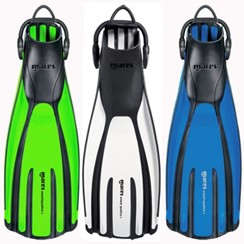
Fins turn your legs into an efficient propulsion system. They come in two main types:
- Full-foot fins – lighter and usually cheaper, great for warm water and travel.
- Open-heel fins + booties – warmer, protect your feet during shore entries, more versatile but bulkier to pack.
For travel, full-foot fins are attractive, but don’t forget you’ll need neoprene socks to avoid blisters and cuts. Open-heel fins with booties are great if you also dive colder water or do a lot of shore entries.
Fortunately, some models can be worn with or without booties. At Dragon Dive, we like compact yet robust models such as the Mares Avanti Pure – perfect for travel and strong enough for Komodo currents.
As your technique improves, consider stiffer blades (RK3, Avanti Quattro, etc.) for better control in current and more precise finning.
4 – Dive computer: your personal underwater co-pilot

A dive computer tracks your depth and time and calculates how much no-decompression time you have left, as well as recommended ascent rates and safety stops. In other words: it helps you avoid decompression sickness within recreational limits.
Thanks to the rise of smartwatches, many entry-level dive computers have become more affordable. Even basic models now often include:
- Nitrox mode (a must if you plan to do more diving or a PADI Enriched Air course).
- Clear displays, sometimes even colour screens (e.g. Aqualung i330R).
- Audible and visual alarms for ascent rate and no-deco limits.
Many dive centres now require each diver to have their own computer. At Dragon Dive, we strongly encourage it for all our PADI courses in Komodo and fun dives.
For travel, we love simple, robust models like the Mares Puck Pro or entry-level Aqualung units. For techy or multi-sport divers, the Garmin Descent Mk2 is a great all-round watch, and for serious divers who want the top of the top, Shearwater computers are the current benchmark.
5 – BCD: your buoyancy control device (and underwater comfort)

When you’re ready to buy your own BCD, you’re officially taking your diving to the next level. While prices haven’t dropped much, comfort, durability and travel-friendliness have improved a lot.
Main types of BCD for recreational diving:
- Jacket BCDs – inflate around your body, common in rentals and entry-level courses.
- Back-inflate / wing BCDs – the air cell is on your back, giving better horizontal trim and a cleaner front.
Most people learn in jackets, but for your personal BCD, we strongly recommend back-inflate or “donut/peanut” style. These help you achieve a hydrodynamic, horizontal position, which is key in currents like Komodo.
Travel-focused wings are now lighter and more compact than ever. Brands like Tecline are well-known for good donut / peanut BCDs. At Dragon Dive, we love simple, robust back-inflate set-ups for our guides and instructors.
6 – Regulator: your life-support system

Once you own your own regulator set (first stage, primary, octopus, SPG), you’re a fully independent diver. This is the most technical piece of your kit – and the one you should never compromise on.
What to look at:
- Water temperature rating: some lightweight travel regs are not designed for < 14 °C.
- Connection type: DIN vs Yoke.
- Balanced first stage for smoother breathing and performance at depth.
In many parts of Europe, DIN is the norm. In America, Mexico, South East Asia and Japan, you’ll mostly find Yoke valves. Our suggestion for a travel diver: buy a Yoke regulator with a balanced first stage. If you really love DIN, use a screw-on Yoke adaptor when needed – but be aware it adds bulk and your head can bump into it.
Lighter travel regulators are often more affordable, but again: check whether they’re suitable for cold water diving at home if that’s your plan.
Dragon Dive team favourites: Aqualung Legend, Scubapro MK25-based sets, and Apeks regulators for their reliability and service network.
Scuba gear accessories that make a big difference
Once your core kit is sorted, a few accessories can dramatically improve your comfort and safety.
Exposure accessories
- Hood: hugely improves thermal comfort, especially in thermoclines.
- Booties: mandatory for colder water or shore diving.
- Gloves: only where allowed and really needed – remember reef etiquette.

Safety equipment
- SMB (Surface Marker Buoy): essential for safe surfacing after drift dives or when you end far from the boat.
- Compass: very useful in low visibility and mandatory for Divemaster trainees.
- Dive light: crucial at night, but also brilliant by day for wrecks, overhangs and colour.
- Knife or line cutter: especially in areas with fishing lines – line cutters are often more efficient than big knives.
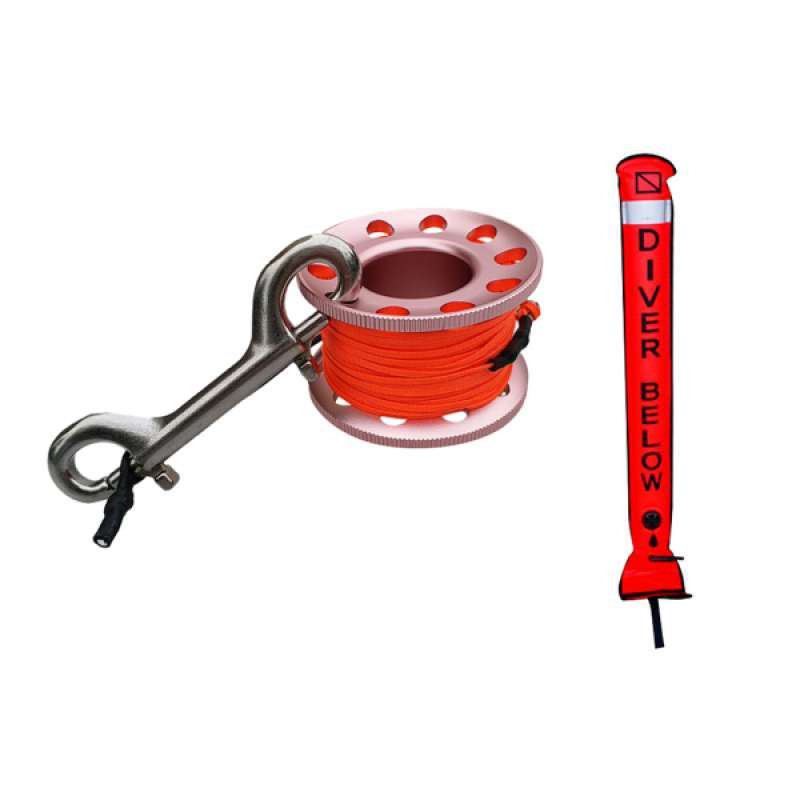
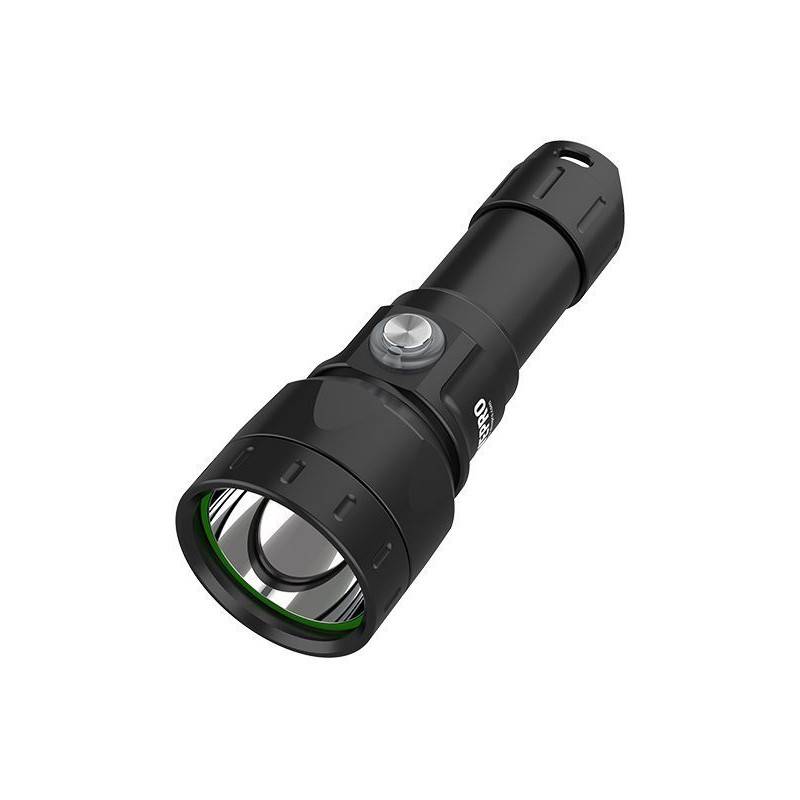
For torches, we usually recommend 2,000–5,000 lumens for serious day and night diving.
Streamlining & extra tools
- Clips & bungee to secure gauges and octopus (no more dragging gear on the reef!).
- Reef-safe sunscreen to protect both your skin and the marine environment.
- Spare mask strap, mouthpiece, O-rings for minor gear issues on trips.
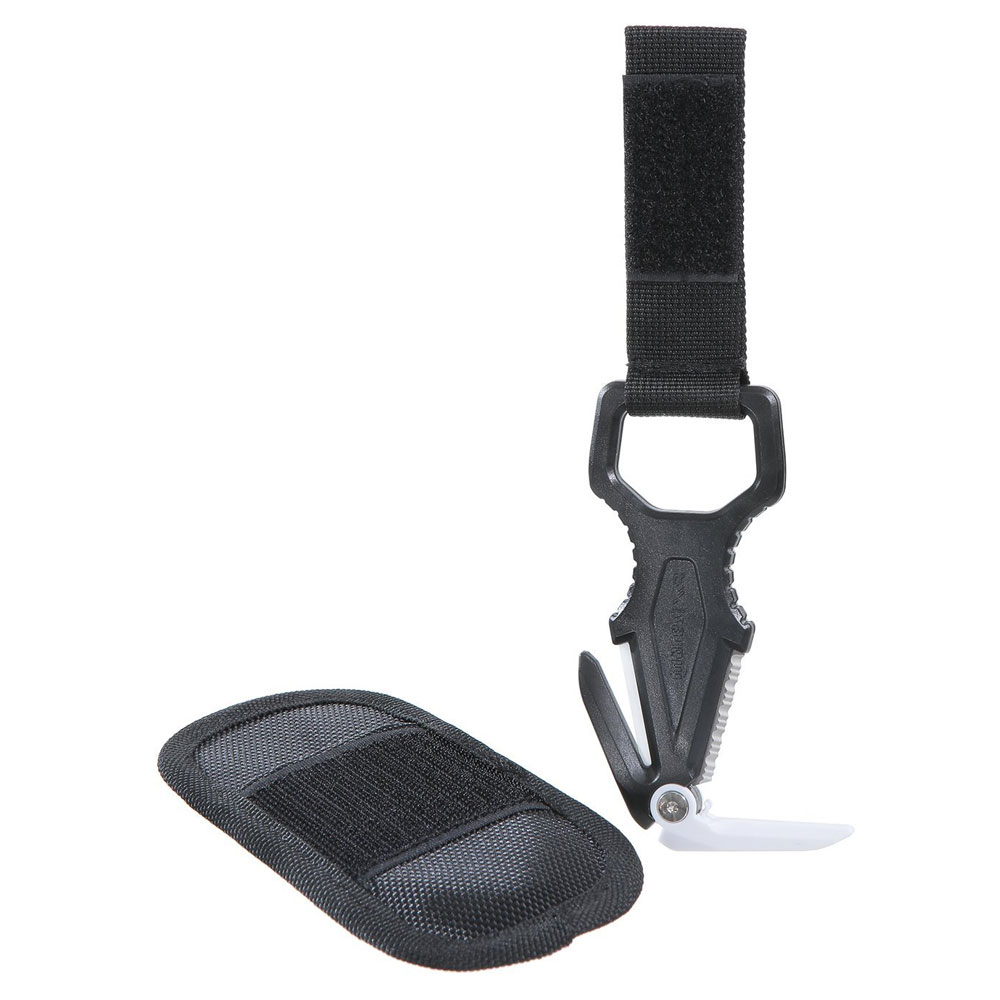
We’ve also written a dedicated article about dive lights and how to choose the right one for your style of diving – worth a look before you invest.
Scuba gear bags & travel – how to carry all this stuff
Technically you can use any suitcase or backpack to carry your scuba gear, but dive-specific bags can make life much easier.
Waterproof and mesh bags
- Small dry bags: perfect on the boat for phones, wallets, passports and a dry T-shirt.
- Large dry bags: good for carrying wet gear back to your hotel or car without soaking everything.
- Mesh gear bags: perfect for liveaboards and dive centres – your gear dries quickly and stays organised during several days of diving.
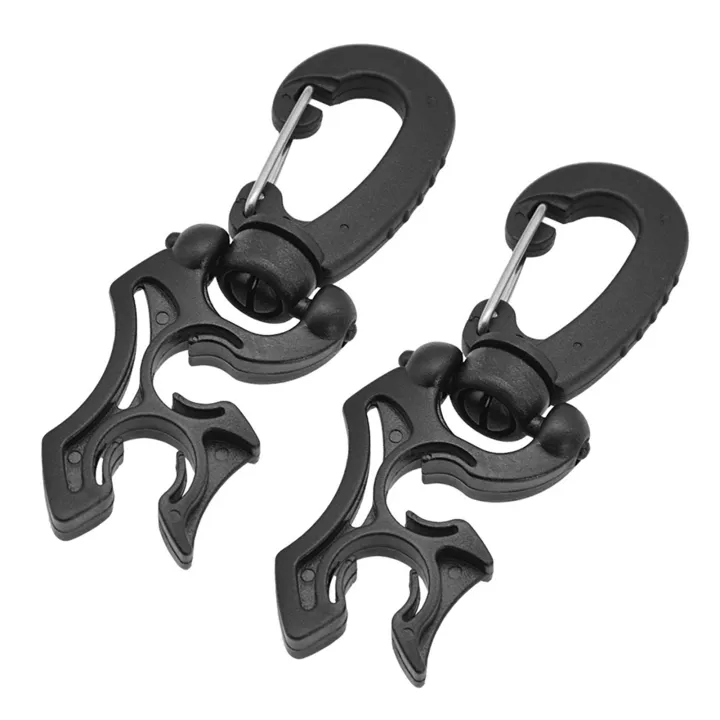
Roller duffle for long-distance trips
For flights and long trips, a roller duffle bag is ideal. Look for:
- Strong, salt-resistant zips.
- Quality wheels that survive rough pavements and harbour ramps.
- Enough volume for your gear without exceeding airline weight limits.
Brands like Decathlon and Stahlsac offer solid options. Always consider your main airline’s luggage rules before buying something huge.
How to choose the right scuba gear (without going crazy)
Our philosophy at Dragon Dive is simple: buy gear you like and that you’ll actually use, but make sure it’s reliable and serviceable.
Dragon Dive quick recommendations
- Fins: don’t cheap out here. Go for proven models such as RK3, Avanti Quattro or similar – they’ll last and perform.
- Regulator: for travel, the Aqualung Mikron is a fantastic light reg. For more all-round use, we love Legend / Apeks / Scubapro MK25-based sets.
- BCD: we strongly recommend donut/peanut wings (Tecline and others) – lighter, cleaner, better trim.
- Computer:
- Sporty multi-activity diver? → Garmin Mk2.
- Tech-curious or serious about diving? → Shearwater (e.g. Teric).
- Just want a reliable travel computer? → Mares Puck Pro or entry-level Aqualung.
The smartest way to choose? Dive with us in Komodo, try different types of gear over a few days, then decide what truly fits your body and your style. We’re always happy to chat gear between dives.
If you’re upgrading your kit while doing a PADI Advanced, Rescue or Divemaster course in Komodo, we can structure dives to let you test different options.
How much does scuba gear cost?
For a recreational diver in tropical waters, a complete starter set of good-quality scuba gear will usually cost around €1,000 (if you shop smart).
| Equipment | Price range (approx.) |
|---|---|
| Mask | €25 – €155 |
| Full-foot fins | €30 – €115 |
| 5 mm wetsuit | €199 – €550 |
| Regulator set | €400 – €1,700 |
| BCD | €300 – €600 |
| Dive computer | €99 – €750 |
| SMB | €30 – €90 |
It may look like a lot at first, but if you dive regularly, owning your gear quickly becomes cheaper than renting. And remember: good gear lasts many years when serviced properly.
Which scuba gear brand should you choose?
There is no single “best brand” – each manufacturer has its strengths. Here’s a simplified cheat sheet based on our experience:
- Wetsuits: Mares and Beuchat are very strong in exposure protection.
- Regulators & BCDs: Aqualung, Scubapro & Apeks are long-standing leaders.
- Donut / wing BCDs: Tecline is a solid choice for donut/peanut systems.
- Masks: Cressi and Tusa are often excellent for fit and clarity.
- Dive computers: Shearwater and Garmin dominate the high end; many others offer great entry-level units.
The most important question is not only “which brand is best?” but: “Can this be serviced where I live?”
Regulators especially must be serviced annually or every two years (depending on the brand and usage). Before buying, ask your local dive shop which brands they can service and which spare parts are easily available.
At Dragon Dive Komodo, we are happy to advise you based on where you live, what kind of diving you plan to do, and which gear will work well both here in Komodo and back home.
Ready to test your next scuba gear in Komodo?
Build your dream kit while enjoying world-class diving. Join us at Dragon Dive Komodo for daily dives, Indonesia liveaboards and PADI courses with professional, comfortable equipment.

